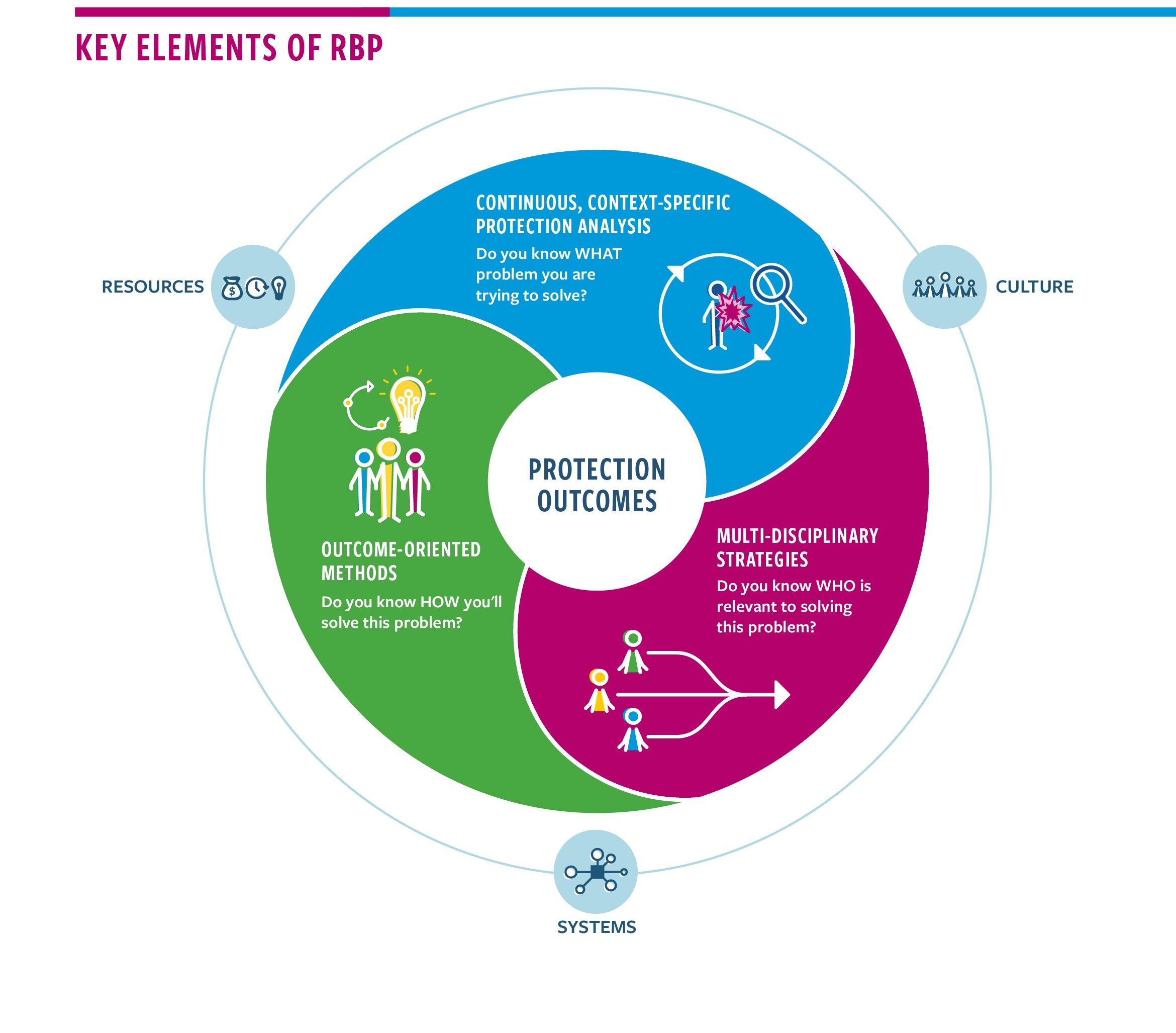Workshop Report on Internalization of the Centrality of Protection
| Title of File | Language | |
|---|---|---|
| Workshop Report: Internalization of the Centrality of Protection | English | Download |
| One-Pager: Summary of Workshop on Internalization of the Centrality of Protection | English | Download |
Key Findings Expand All
There is still confusion regarding the definition of the Centrality of Protection and what is required to implement it. Similarly, the long-standing failure to understand the ‘lifesaving’ nature of protection compared to material assistance is still a barrier to achieving organization-wide prioritization.
Senior leadership’s persistent failure to treat the Centrality of Protection as a priority is a critical barrier to internalization in terms of direction from leadership, the generation of institutional buy-in, and the establishment of internal policies, operational changes, and budgetary changes.
Ensuring senior leaders treat the Centrality of Protection as an organizational priority requires both external accountability and incentivization. Two key incentivization measures were identified: 1) external pressures, including peer pressure on senior leaders, and 2) clear expectations from donors, including proposals and reporting requirements.
Risk tolerance of an organization and senior leaders is an important but perhaps under-recognized factor needed to realize the Centrality of Protection in operations. This includes: 1) hesitancy of organizations to engage authorities on behaviour changes necessary for reducing protection risks in case a backlash jeopardizes operational access; 2) unwillingness to adhere to collective protection ‘redlines’ if this may compromise assistance delivery. The importance of RC/HC leadership in navigating redline situations was highlighted.
Internal to an organization: In order for staff – institution-wide – to effectively internalize the Centrality of Protection, they must understand how this relates to their existing mandate or activities. Finding the right ‘hook’ and (non-technical) language internally can help build buy-in. The best sequencing of policy and practical efforts to embed the Centrality of Protection depends on the individual organization and its institutional culture and structure.
Sharing expertise, knowledge, lessons, and capacities between organizations is an important way of 1) helping to drive change and 2) minimizing resource use and duplication in constrained environments.
Donors face similar challenges to those faced by humanitarian organizations in advancing the internalization of CoP. Donors expressed interest in identifying opportunities for collaboration and reinforcing mutual learning between donors and humanitarian organizations.
Background
In 2021-22, the IASC commissioned an independent review of its implementation of the 2016 IASC Policy on Protection in Humanitarian Action, often referred to as the Centrality of Protection. The Review found that most international humanitarian actors had not yet embraced a protection-oriented approach, and an IASC Action Plan was put in place in 2023. The Action Plan included a commitment for IASC organizations work to internalize the Centrality of Protection; this workshop was conceived as a support to these efforts.
The workshop, co-hosted by InterAction, the Food and Agriculture Organization (FAO), and the World Food Programme (WFP), brought together 17 IASC member organizations – international NGOs, UN agencies, and Red Cross Red Crescent Movement (see Annex A for a list) – that have taken steps to internalize the Centrality of Protection. Representatives from the Protection Donor Group joined online on the second day, sharing their own efforts on internalization and discussing collaboration opportunities.
It aimed to identify and share lessons, common enablers, and barriers that support or hinder internalization; develop recommendations on how enablers could be catalyzed and barriers overcome; facilitate discussion and collaboration between donors and IASC organizations on internalization in policy, strategy, and operations; and discuss and shape interagency initiatives aimed at strengthening system-wide uptake.
